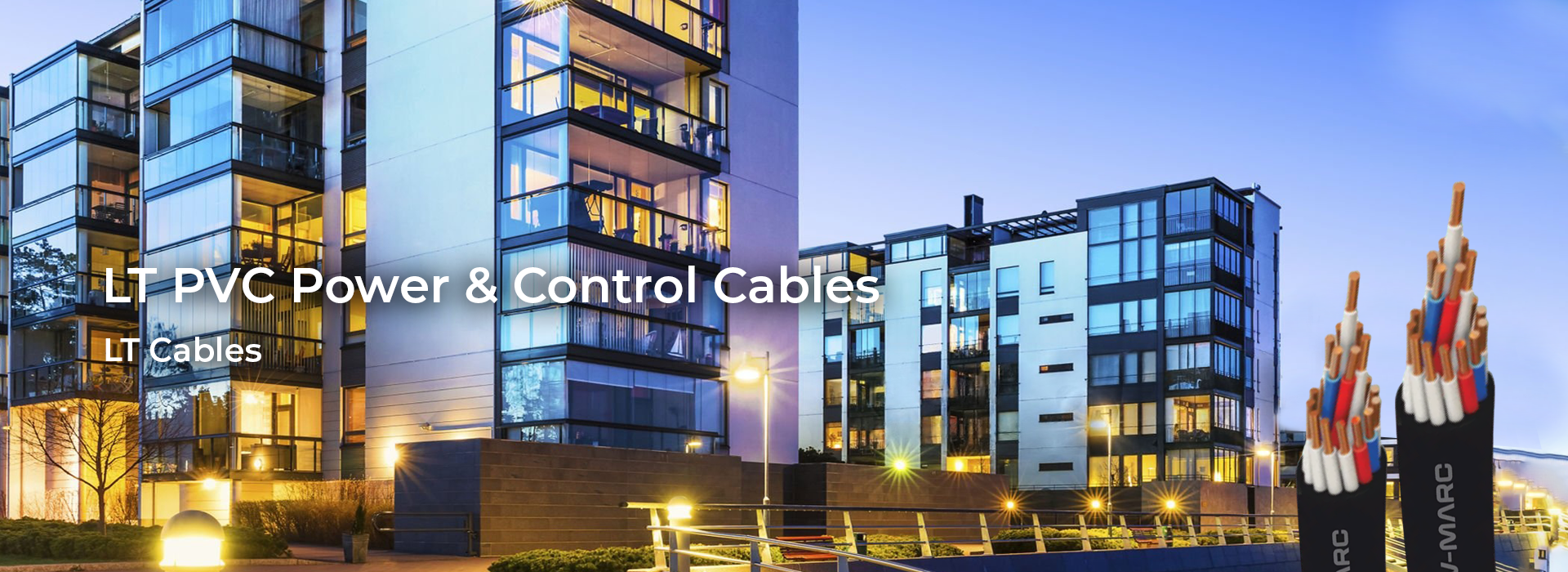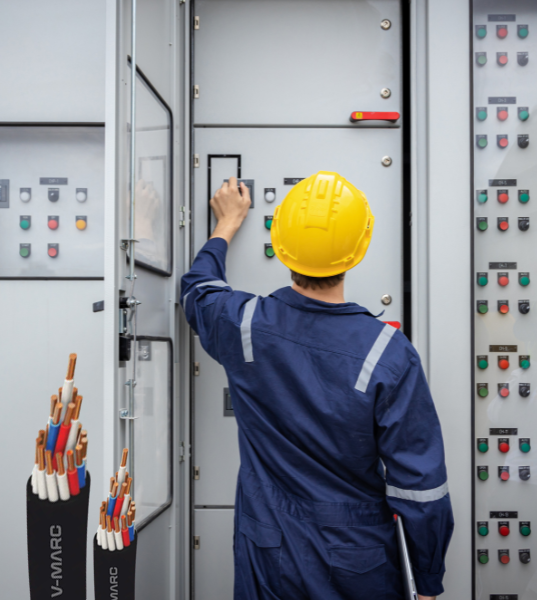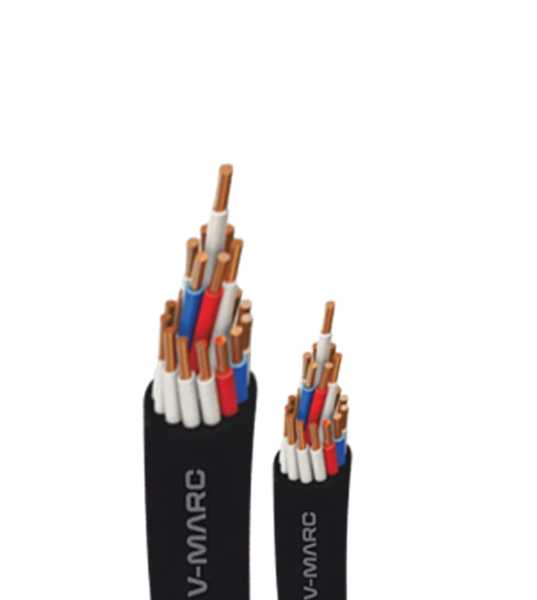NSE Live



Available Color
Available in other colors as per the customer’s requirements.
LT PVC Power & Control Cables
IS-1554 (Part -1) 1988 compliant cables feature copper/aluminium conductors, PVC insulation, and armouring for mechanical protection. Outer sheath options include ST1 and ST2 PVC compounds, suitable for various continuous operations.
Standards
IS-1554 (Part -1) 1988
Standards
IS-1554 (Part -1) 1988
Description
Conductor construction
- Insulation with type A PVC Compound as per IS: 5831, suitable for 70°C continuous operation
- Insulation with type C PVC Compound as per IS: 5831, suitable for 85°C continuous operation
An inner sheath is provided over the laid-up cores. It is provided to give a circular shape to the cable, and it provides bedding for the armouring. I.S. 1554 permits the following two methods of applying the inner sheath of any thermoplastic material, i.e., PVC.
- Extruded Inner Sheath : It is provided by extrusion of thermoplastic material over the laid-up cores. This type of inner sheath also acts as a water barrier between the cores and outer sheath. In case of a puncture in the outer sheath, water cannot reach the cores, and hence we recommend that cables for outdoor underground use should have an extruded inner sheath
- Taped Inner Sheath : It is provided by wrapping a thermoplastic tape over the laid-up cores. This method saves a process, and hence manufacturers always provide this type of inner sheath unless the purchase specifications ask for an extruded inner sheath.
Armouring
Cable Armouring consists of galvanized steel wire/strip provided over the inner sheath in multi-core cables and aluminium round wire/strip over the insulation in single-core cables. It provides mechanical protection to the cable & carries earth fault current in case of a short circuit of a core with armour.
As per IS:1554 (Part-1) 1988, round wire armouring is provided in cable, where the calculated diameter under armour is up to 13 mm. Above this, the armouring is either with round wire or a strip of size 4mm x 0.80mm. In long runs of cables and in case of mines, round wire armouring is a must, as strip construction provides higher resistance to earth fault current, and sometimes this current may not be sufficient to operate the circuit breaker in case of an earth fault. In mines, the resistance of the armour in no case should exceed the resistance of the main core by more than 33% for safety reasons. To achieve this, sometimes tinned hard-drawn copper wires are used along with galvanized steel wires. Sometimes, two layers of round steel wire or steel strip are provided in opposite directions with barrier tape in between to provide extra protection. In case of a single-core cable for use in AC circuits, the material for armouring has to be non-magnetic, as in this case, the return current does not pass through the same cable, and hence it will not cancel the magnetic field produced by the current. These magnetic lines, which are oscillating in the case of AC current, will give rise to eddy current in magnetic armouring, and hence, armouring will become hot, and this may lead to the failure of the cable. Generally, hard-drawn aluminium wires/strips are used for armouring in this case.
Outer Sheath
Outer Sheath : The PVC covering over the armouring in case of armoured cables and over the inner sheath in case of unarmoured cables is called the outer sheath. IS: 1554 specifies the nominal and minimum thickness of outer sheath for unarmoured cables and only the minimum thickness of outer sheath for armoured cables.
Types of PVC compounds for outer sheath :
- Outer sheath with type ST1 PVC compound as per IS: 5831, which is suitable for 70°C continuous operation
- Outer sheath with type ST2 PVC compound as per IS: 5831, which is suitable for 85°C continuous operation
Currently, in Power, Chemical, Fertilizer, and Cement plants, many PVC cables are placed in the cable shaft or on cable trays. In case of fire, burning of this huge bunch of PVC cables emits a dense, corrosive smoke. Due to thick black smoke and toxic HCL content of the smoke, visibility is impaired to a large extent & it also creates suffocation, which totally defeats firefighting.
To overcome these deficiencies, cables were developed with FR / FRLSH / LSZH properties. We are capable of providing cables with any of these properties.


.a0c37ae14e42a8824ea3.png)